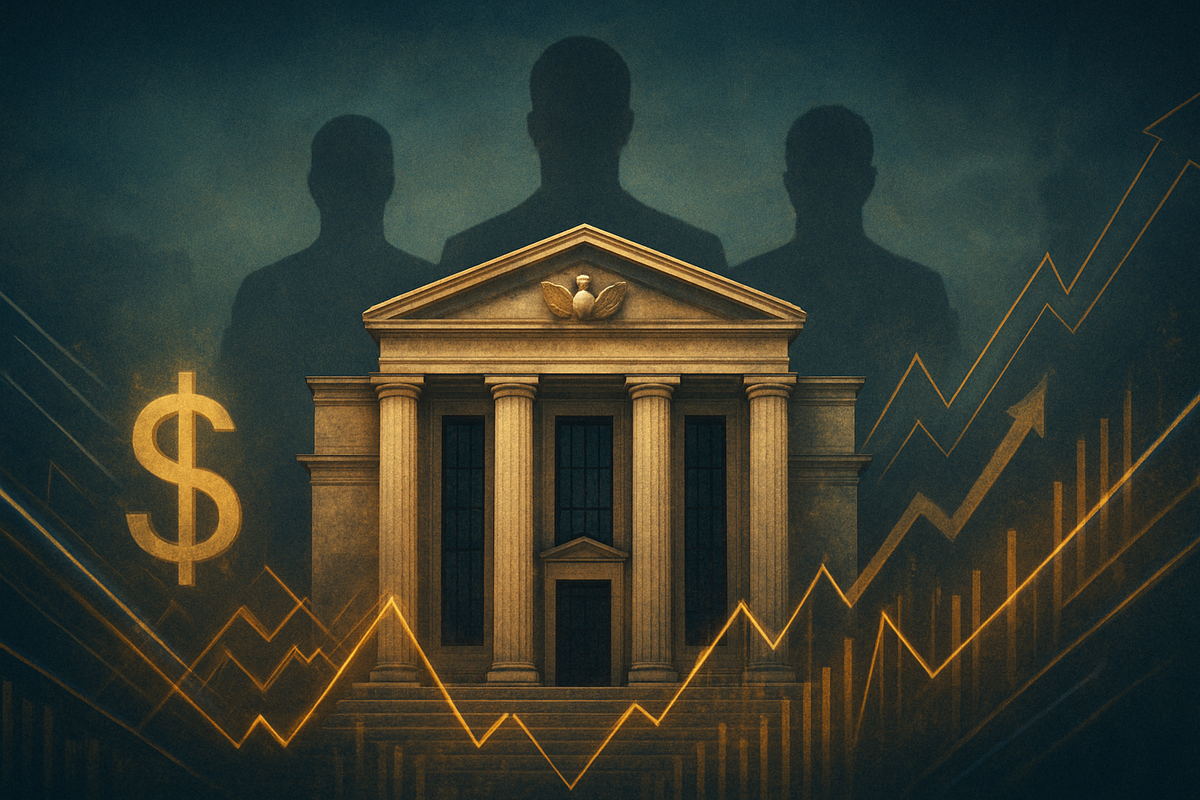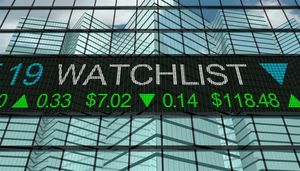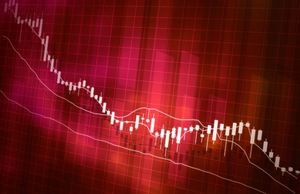
Washington D.C. – As Federal Reserve Chairman Jerome Powell's term approaches its conclusion in early 2026, the financial world is abuzz with speculation following Treasury Secretary Scott Bessent's recent announcement of a five-person shortlist to lead the nation's central bank. This pivotal selection, anticipated to reshape the trajectory of U.S. monetary policy, has sent ripples through markets, signaling a potential departure from the cautious, data-dependent approach that has characterized the Powell era. The administration's choice for the next Fed Chair will not only dictate the course of interest rates and inflation but also influence global economic stability for years to come.
The unveiling of Secretary Bessent's preferred candidates underscores a clear intent to align the Federal Reserve's leadership with the administration's broader economic agenda, which prioritizes growth and a potentially more flexible stance on inflation. Investors and economists are now meticulously dissecting the backgrounds and known policy leanings of each finalist, eager to understand what their appointment could mean for everything from bond yields to corporate earnings. The stakes are incredibly high, as the individual chosen will inherit the immense responsibility of navigating an increasingly complex global economic landscape.
A New Era Dawns: The Shortlist and Its Policy Implications
The announcement of the shortlist by Treasury Secretary Scott Bessent in October 2025 marks a critical juncture in U.S. financial governance. The timeline leading up to this moment has been characterized by increasing anticipation regarding the post-Powell era, with various economic factions advocating for different policy directions. Secretary Bessent, a seasoned global macro investor and the 79th U.S. Secretary of the Treasury, brings a background deeply rooted in market dynamics and a reputation for challenging conventional economic wisdom. His tenure at Soros Fund Management and his own firm, Key Square Group, honed his expertise in currency and fixed-income markets, making his input on the Fed Chair selection particularly influential.
The five finalists reportedly on Bessent's shortlist are: Kevin Warsh, Christopher Waller, Michelle Bowman, Kevin Hassett, and Rick Rieder. Each candidate presents a distinct profile and potential policy approach. Kevin Warsh, a former Federal Reserve Governor (2006-2011) and a scholar at the Hoover Institution, is known for advocating a "strategic reset" for the central bank, including a smaller balance sheet and a focus on stricter price control without necessarily linking it to joblessness. His selection could usher in a more hawkish stance on inflation but a potentially more aggressive approach to rate cuts if growth falters. Christopher Waller, a current Fed Board Governor since 2020, emphasizes data-driven independence but has shown a willingness to cut rates swiftly in response to external shocks like tariffs, even if it means tolerating temporary price spikes, if long-term inflation expectations remain anchored. Michelle Bowman, also a current Fed Board Governor, is generally seen as aligned with a growth-supportive stance. Kevin Hassett, former Director of the National Economic Council, is a conservative economist favoring deregulation and growth-oriented policies, suggesting a strong alignment with the administration's agenda. Lastly, Rick Rieder, Chief Investment Officer of Global Fixed Income at BlackRock (NYSE: BLK), brings extensive practical market experience, potentially favoring pragmatic, growth-oriented monetary policies.
The initial market reaction to the shortlist has been one of cautious assessment. Bond markets have seen some volatility as traders begin to price in the varying degrees of dovishness or hawkishness associated with each candidate. Equity markets are also closely watching, as the Fed's future interest rate path will directly impact corporate borrowing costs and valuations. The common thread among many of these candidates, particularly given Bessent's own economic leanings and the administration's priorities, appears to be a willingness to challenge the status quo and potentially adopt a more growth-centric monetary policy, even if it entails a higher tolerance for inflation or a more aggressive use of rate cuts to support employment.
Navigating the New Monetary Landscape: Winners and Losers
The selection of the next Federal Reserve Chairman from Secretary Bessent's shortlist carries significant implications for various sectors and individual companies, creating both potential winners and losers in the market. A shift towards a more dovish Fed, prioritizing employment and growth over strict inflation targeting, could broadly benefit economically sensitive sectors.
Potential Winners:
- Growth Stocks and Technology Companies: Companies in the technology sector, often characterized by high growth potential and reliance on future earnings, tend to perform well in lower interest rate environments. A more dovish Fed could keep borrowing costs down, making it cheaper for companies like Apple (NASDAQ: AAPL), Microsoft (NASDAQ: MSFT), and Amazon (NASDAQ: AMZN) to fund expansion and innovation.
- Real Estate and Housing Sector: Lower interest rates typically translate to more affordable mortgages, stimulating demand in the housing market. Homebuilders such as D.R. Horton (NYSE: DHI) and Lennar (NYSE: LEN), as well as real estate investment trusts (REITs), could see increased activity and profitability.
- High-Leverage Companies: Businesses with significant debt could benefit from lower interest rates, reducing their interest expenses and improving their bottom lines. This might include certain industrial or utility companies.
- Emerging Markets: A weaker U.S. dollar, often a consequence of looser monetary policy, can make U.S. exports more competitive and improve the economic outlook for emerging markets by reducing their dollar-denominated debt burdens.
Potential Losers:
- Financial Institutions: Banks and other financial institutions like JPMorgan Chase (NYSE: JPM) or Bank of America (NYSE: BAC) often thrive in environments with steeper yield curves, where they can earn more from lending long-term than they pay for short-term deposits. A dovish Fed that keeps short-term rates low for extended periods or flattens the yield curve could compress their net interest margins.
- Value Stocks (in certain scenarios): While not universally true, if a dovish policy leads to higher inflation, certain value stocks that rely on stable, predictable earnings might see their real returns eroded. However, if inflation is controlled, value stocks could still perform well.
- Fixed-Income Investors (especially long-term bonds): A more growth-focused or inflation-tolerant Fed could lead to higher inflation expectations, which would erode the real value of fixed-income investments, particularly long-term government bonds.
- Companies reliant on a strong dollar: U.S. companies that import a significant amount of their goods or have substantial international operations that benefit from a strong dollar could face headwinds if a dovish Fed policy leads to dollar depreciation.
The specific impact will, of course, depend on the chosen candidate's exact policy implementation and the broader economic context. However, the general sentiment is that an administration-aligned Fed Chair could prioritize economic stimulus, potentially leading to a more inflationary environment than under Chairman Powell, which would necessitate a re-evaluation of investment strategies across the board.
Wider Significance: A Paradigm Shift in Monetary Governance
The impending selection of the next Federal Reserve Chairman represents more than just a change in leadership; it signals a potential paradigm shift in U.S. monetary governance, with far-reaching implications for domestic and global financial markets. This event fits into a broader trend of increased scrutiny and, at times, political pressure on independent central banks worldwide. Administrations often seek to appoint central bankers whose economic philosophies align with their own, aiming to foster a more coordinated approach between fiscal and monetary policy.
The potential for a more dovish Fed, particularly one that might tolerate higher inflation to achieve maximum employment or support economic growth, could have significant ripple effects. Competitors and partners globally will be watching closely. A U.S. Fed that deviates significantly from global central bank consensus on inflation targeting could lead to currency volatility and shifts in international capital flows. For instance, if the European Central Bank (ECB) or the Bank of Japan (BOJ) maintain stricter inflation targets, a relatively more accommodative Fed could weaken the U.S. dollar, impacting trade balances and commodity prices.
Regulatory and policy implications are also substantial. A new Fed Chair might re-evaluate the regulatory framework for banks and financial institutions, potentially leaning towards deregulation if the administration believes it stifles growth. Furthermore, the Fed's role in addressing systemic risks, climate change financial risks, and digital currencies could evolve significantly under new leadership. The candidates on Bessent's shortlist, particularly those with strong ties to previous administrations or with backgrounds in private markets, might bring fresh perspectives on these regulatory challenges.
Historically, changes in Fed leadership have often coincided with shifts in economic cycles and policy priorities. For example, Paul Volcker's appointment in 1979 marked a decisive turn towards aggressive inflation-fighting, while Alan Greenspan's tenure saw a period of sustained economic growth with relatively low inflation. Comparing this potential transition to past events, the current scenario echoes moments when the executive branch sought to assert greater influence over monetary policy, highlighting the delicate balance between central bank independence and governmental economic objectives. The emphasis on growth and potentially a higher tolerance for inflation could be seen as a return to a more demand-side oriented economic policy, a contrast to the more supply-side focus of some previous eras.
What Comes Next: Navigating Uncertainty and Opportunity
The coming months will be crucial as the nation awaits the President's nomination for Federal Reserve Chairman from Treasury Secretary Bessent's shortlist. The short-term possibilities include increased market volatility as investors adjust their portfolios to anticipate the policy leanings of the favored candidate. Expect heightened scrutiny on economic data releases, particularly inflation and employment figures, as these will heavily influence the rhetoric and potential actions of the next Fed Chair. In the long term, the selection could usher in a new era of monetary policy, potentially characterized by a greater emphasis on fiscal-monetary coordination, a more flexible approach to inflation targeting, and perhaps a re-evaluation of the Fed's balance sheet strategy.
Potential strategic pivots or adaptations will be required across various sectors. Companies may need to re-evaluate their capital expenditure plans, debt structures, and pricing strategies in anticipation of different interest rate environments and inflation trajectories. Financial institutions might need to adjust their lending practices and risk management frameworks. Investors, too, will face the challenge of adapting to a new monetary policy regime, potentially shifting allocations towards assets that perform well in either a higher growth, higher inflation environment or one characterized by sustained low rates.
Market opportunities or challenges will undoubtedly emerge. If the new Fed Chair pursues a more growth-oriented, dovish policy, there could be opportunities in sectors that thrive on lower borrowing costs and robust economic expansion, such as technology, consumer discretionary, and real estate. Conversely, challenges could arise for fixed-income investors and financial institutions sensitive to compressed interest rate margins. A less predictable Fed, or one that diverges significantly from global central bank norms, could also introduce greater currency risk and geopolitical economic instability. Potential scenarios range from a smooth transition leading to sustained growth to a more turbulent period marked by higher inflation and market uncertainty, depending on the chosen leader's effectiveness and the global economic response.
Comprehensive Wrap-Up: A New Chapter for the Fed
The impending decision on the next Federal Reserve Chairman, guided by Treasury Secretary Scott Bessent's shortlist, represents a pivotal moment for the U.S. and global financial markets. The key takeaway is the strong indication of a potential shift in monetary policy direction, moving towards a more growth-centric approach that may entail a higher tolerance for inflation and a more proactive stance on supporting employment. The candidates — Kevin Warsh, Christopher Waller, Michelle Bowman, Kevin Hassett, and Rick Rieder — each bring unique perspectives, but collectively, they signal a departure from the strict inflation-fighting orthodoxy that has often dominated Fed policy.
Moving forward, the market will be closely assessing the implications of this leadership change. Investors should prepare for increased volatility and the need to re-evaluate traditional investment strategies. Sectors like technology and real estate could find tailwinds from potentially lower interest rates, while financial institutions might face headwinds from compressed margins. The broader significance lies in the potential redefinition of central bank independence and the interplay between monetary and fiscal policy, setting a precedent for future administrations.
The lasting impact of this selection could be profound, shaping the U.S. economy's trajectory for the next decade. A more growth-focused Fed might stimulate innovation and job creation but could also risk periods of higher inflation. What investors should watch for in the coming months includes not only the final nomination and Senate confirmation but also the initial public statements and policy signals from the new Chairman. Their communication style, their stance on the dual mandate, and their approach to the Fed's balance sheet will provide critical clues about the future direction of monetary policy and its effects on the market. The next chapter for the Federal Reserve is about to be written, and its contents will resonate across every corner of the financial world.
This content is intended for informational purposes only and is not financial advice






